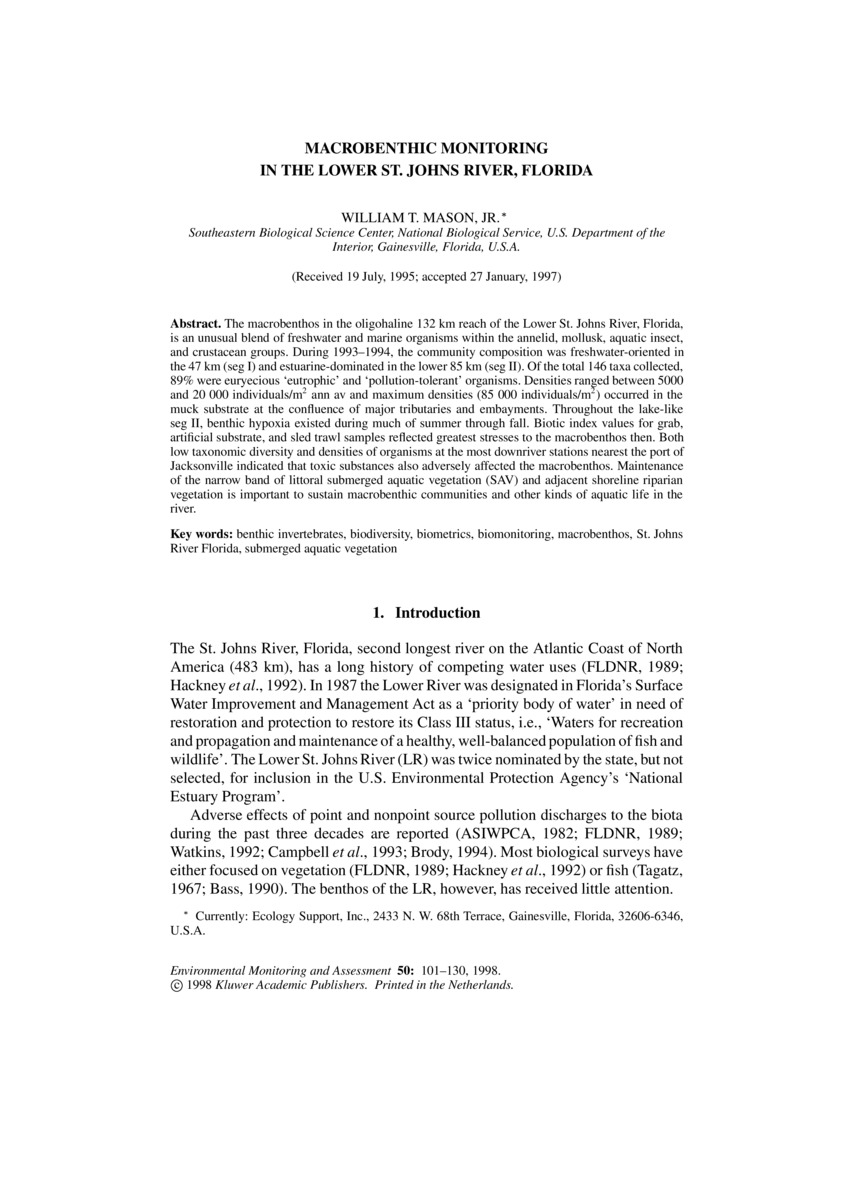Journal Article
AccessMacrobenthic Monitoring in the Lower St. Johns River, Florida
The macrobenthos in the oligohaline 132 km reach of the Lower St. Johns River, Florida, is an unusual blend of freshwater and marine organisms within the annelid, mollusk, aquatic insect, and crustacean groups. During 1993–1994, the community composition was freshwater-oriented in the 47 km (seg I) and estuarine-dominated in the lower 85 km (seg II). Of the total 146 taxa collected, 89% were euryecious 'eutrophic' and 'pollution-tolerant' organisms. Densities ranged between 5000 and 20 000 individuals/m2 ann av and maximum densities (85 000 individuals/m2) occurred in the muck substrate at the confluence of major tributaries and embayments. Throughout the lake-like seg II, benthic hypoxia existed during much of summer through fall. Biotic index values for grab, artificial substrate, and sled trawl samples reflected greatest stresses to the macrobenthos then. Both low taxonomic diversity and densities of organisms at the most downriver stations nearest the port of Jacksonville indicated that toxic substances also adversely affected the macrobenthos. Maintenance of the narrow band of littoral submerged aquatic vegetation (SAV) and adjacent shoreline riparian vegetation is important to sustain macrobenthic communities and other kinds of aquatic life in the river.
Publisher - Springer
Subjects - Macrobenthic invertebrates
Citation: Mason Jr WT. 1998. Macrobenthic Monitoring in the Lower St. Johns River, Florida. Environ. Monit. Assess.; 50(2):101-130 http://dx.doi.org/10.1023/A:1005802229832
